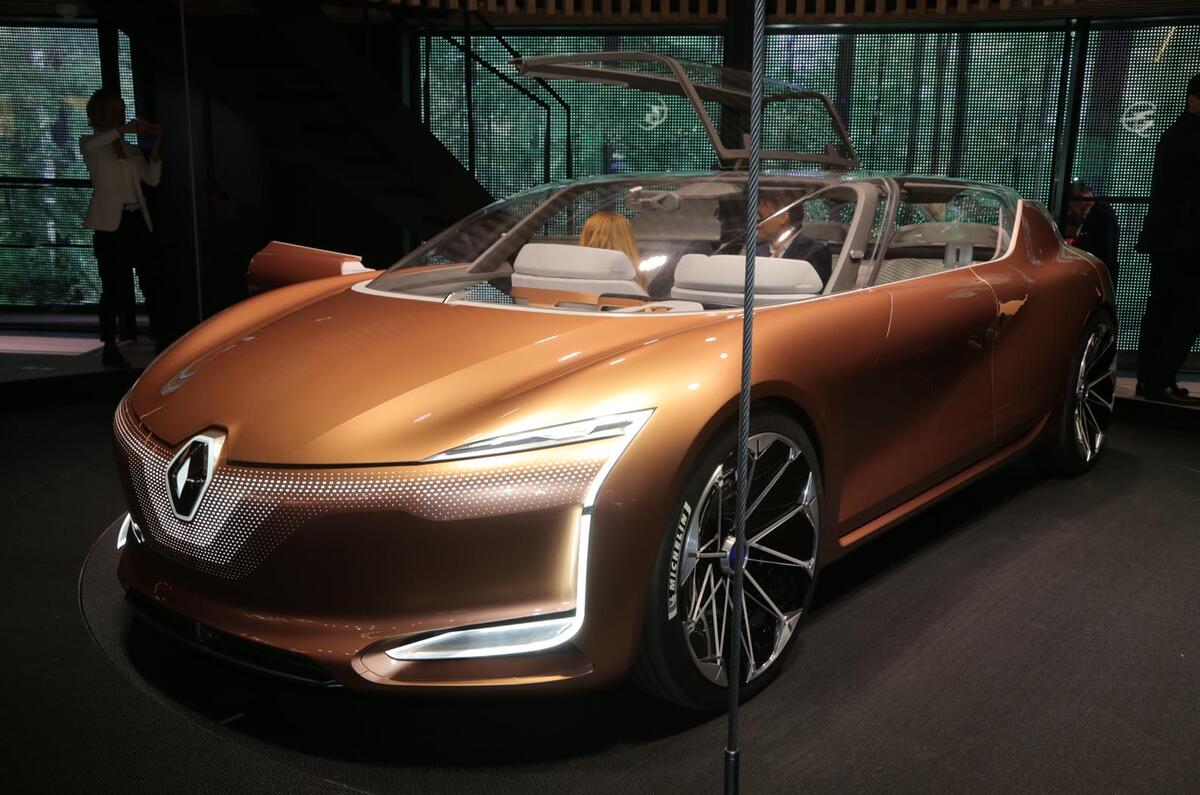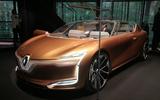Renault has revealed the Symbioz - a connected, autonomous and electric concept that integrates itself into the driver’s home when not in use.
The concept, revealed at the Frankfurt motor show, looks to the year 2030, while a ‘demo car’ - essentially a precursor to the concept’s introduction - is targeted for 2023.
Frankfurt motor show 2017: live report and gallery
The Symbioz - as the name suggests - connects to the driver’s home wirelessly and functions as an extra room when parked. Renault has demonstrated how the car can be integrated and elevated in the house to act as a small extra room.
When not in use, the car can return battery power to the house to smooth the waves in power demand that typical home usage creates and can serve as a back-up power supply in the event of a blackout.
The car can also plan ahead and adapt to the driver’s usage by syncing to their calendar; for example, if no long trips are planned in the coming days, it will not draw charge from the grid to allow the house to use as much as required. A small reservoir will be kept in the car’s battery in case of emergency.
In keeping with the industry’s Internet of Things trend, household appliances and functions can be controlled from the car. For example, if a long trip is planned, the car can instruct the house to close shutters and turn down the heating while you are away. Renault has also displayed a concept house as part of the Symbioz package, demonstrating how the relationship between the home and car will evolve.
At 4.7 metres long, 1.98m wide and 1.38m high, the Symbioz is 150mm shorter, 110mm wider and 110mm squatter than the Talisman, but Renault claims that its interior is as large as that of the segment above - a segment that Renault hasn’t explored since the Vel Satis.
The car’s power comes from two electric motors, both rear-mounted and powering one rear wheel each. Renault claims the industry standard of 310 miles (500km), with 661bhp and 487lb ft of torque on tap, contributing to acceleration of less than six seconds. The 72kWh battery pack can reach an 80% charge in 20 minutes.
Renault says these performance figures are liable to change as technology evolves in the lead-up to 2030. Some technology seen on the concept will filter through to production cars from next year. However, Renault could not specify which aspects.
Styling draws from Renault’s current range, as well as past concepts such as the Trezor, while lightweight carbonfibre construction and an upper half made from glass keep things strictly conceptual. The third brake light is built into the rear wind deflector, which sticks out of the car’s rear windscreen in a transparent fin. The car’s autonomous sensors are built into this structure.








































Join the debate
Add your comment
I love Renault concept cars,
I love Renault concept cars, for the past 20ish years they have produced consistently interesting and beautiful concepts. Sadly these dont (or at least havent for 15years since the Avantime) reflected on their production models which are generally dull.